Are you looking to transform your outdoor space into a timeless haven of elegance and order? Formal gardens, with their geometric layouts, symmetrical patterns, and ornamental features, offer a classic approach to garden design that can elevate any property.
Whether you’re working with a sprawling estate or a modest backyard, the principles of formal garden design can help you create a stunning, serene environment perfect for entertaining or relaxing.
Let’s explore the key elements and ideas that can bring your vision of a formal garden to life.
Designing With Symmetry
Using symmetry in formal gardens creates a sense of order and elegance. It’s all about achieving balance and harmony, making your garden a peaceful oasis.
Planning Paths and Walkways
Starting with the architecture lines of your property helps create symmetrical paths. Wide pathways with clear lines guide visitors smoothly through the garden. Incorporating materials like stone or brick can enhance the geometric feel.
Arranging Symmetrical Plant Beds
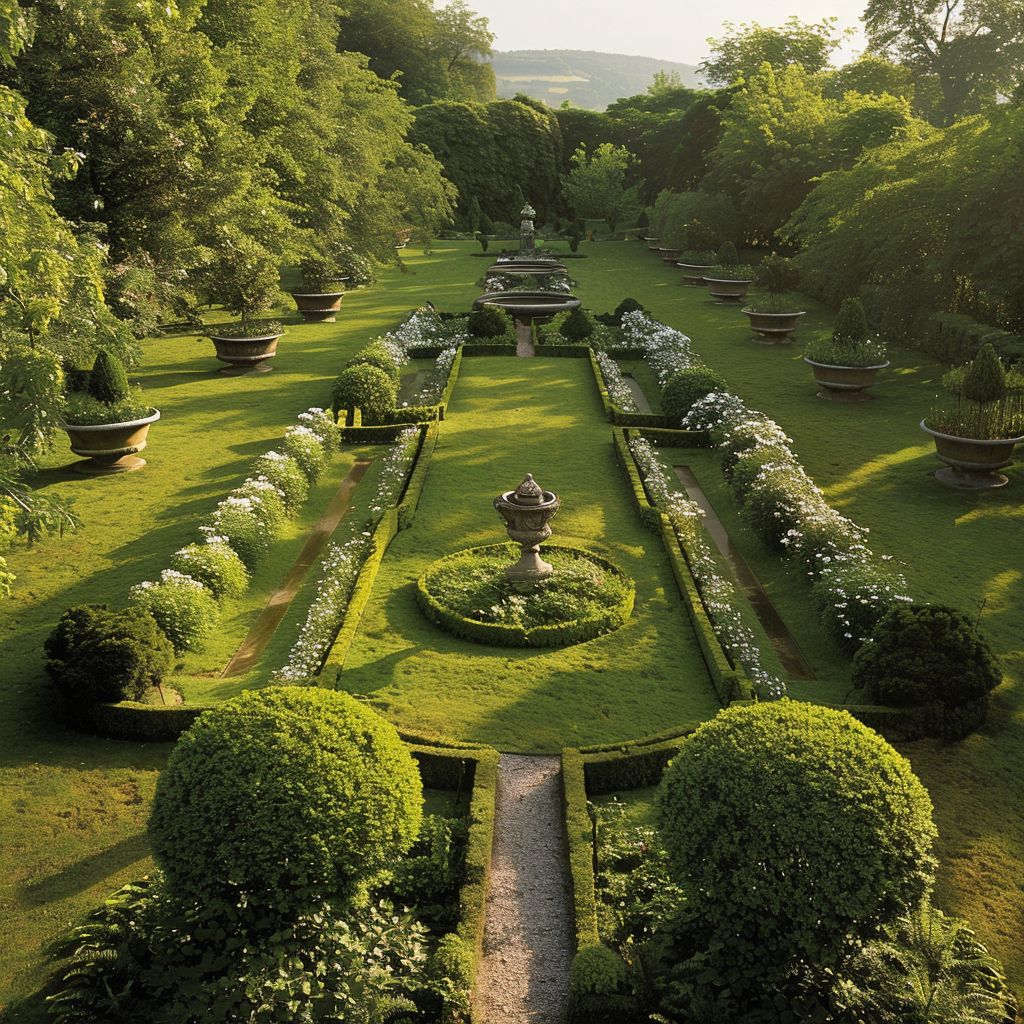
Aligning plant beds symmetrically brings a sense of unity to the garden. Use identical plants or mirror designs to maintain balance. Consider hedges, flower beds, and shrubs carefully positioned for a harmonious look.
Choosing Classic Plants for Formal Gardens
In a formal garden, plant choices play a critical role in achieving elegance and structure. Selecting the right varieties helps craft a timeless and refined outdoor space.
Introduction to Traditional Formal Garden Plants
Begin with English box (Buxus sempervirens). It’s perfect for hedging and topiaries due to its dense, slow-growing foliage. Its ability to be shaped makes it a mainstay in formal gardens.
Opt for classic Leyland Cypress (x Cupressocyparis leylandii) for living walls or screens. Its rapid growth and tall, columnar shape add elegance and privacy.
Consider planting cycads and Gymea lilies. Though less common, these plants act as striking focal points. Their bold presence can replace traditional clipped hedges or topiary.
Maintaining Seasonal Blooms in Formal Setups
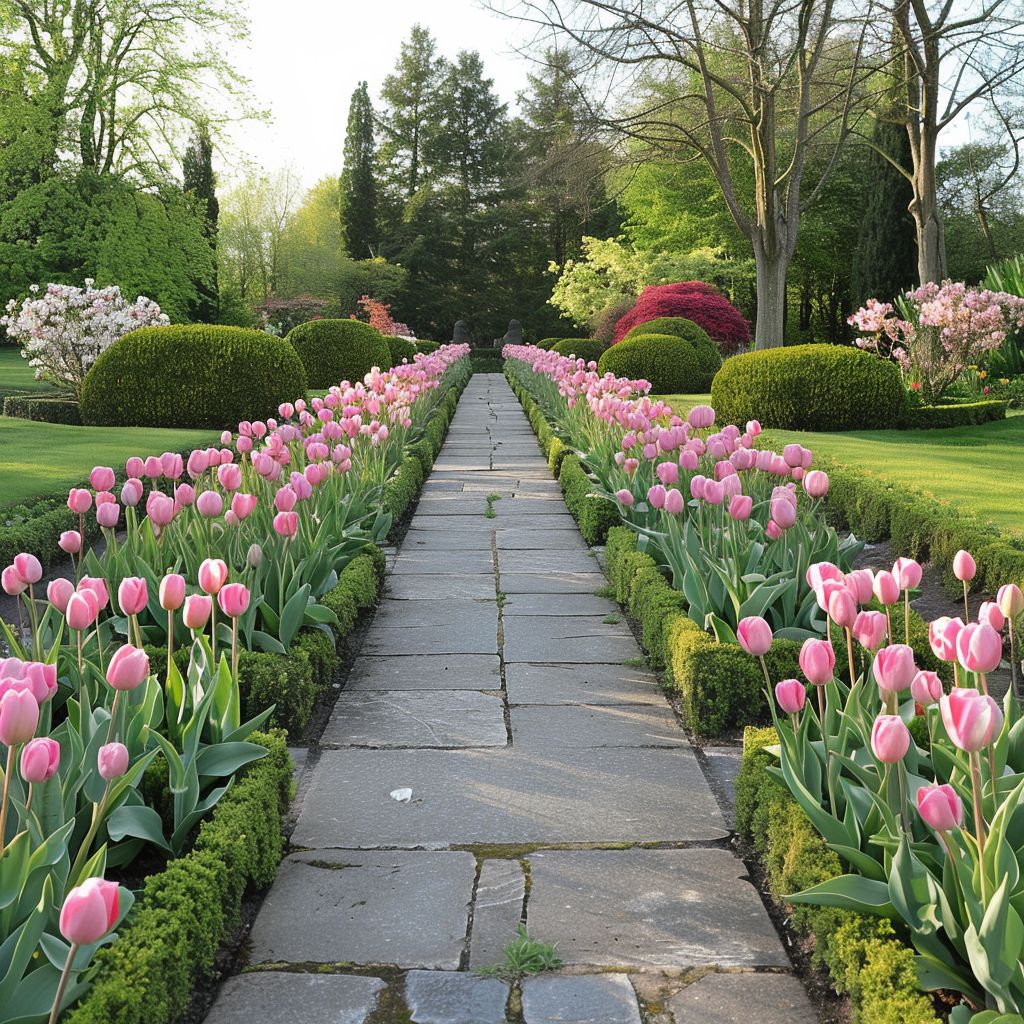
Incorporate a mix of evergreens and seasonal flowers. Evergreen plants like the English box provide structure year-round. Seasonal blooms such as tulips or roses offer a burst of colour during their peak.
Regular trimming is essential for maintaining the neat lines of your garden. Hedges and topiaries should be pruned to keep their shape.
Add lighting to highlight plants at night. This ensures your garden remains a focal point even after the sun sets. Lights enhance features and create an evening ambience.
Selecting the appropriate plants and maintaining them with care makes your formal garden a picturesque and elegant retreat.
Incorporating Focal Points
Adding focal points captivates attention and lends character to your garden.
Selecting Statues and Ornamental Pieces
Choose statues that complement your garden’s style. Classical figures, contemporary art, or whimsical sculptures can each add a different vibe.
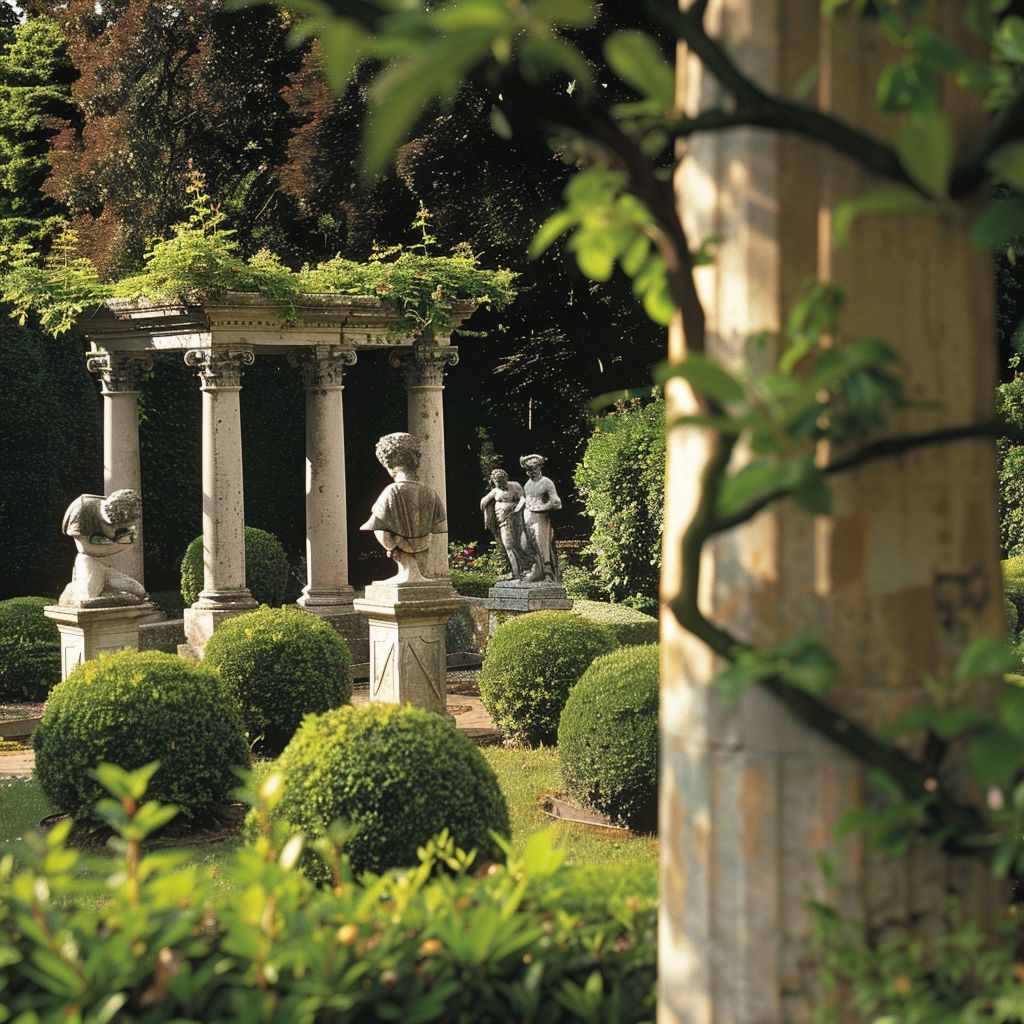
Place statues at the end of pathways or amidst planting beds for maximum impact. Consider using ornamental pieces like sundials, birdbaths, or decorative planters to enliven the space further.
Integrating Water Features Strategically
Install water features to introduce a sense of tranquility. Fountains and ponds can serve as central elements, drawing the eye and creating soothing sounds. Position fountains where they can be easily viewed from multiple angles.
Small fountains or trickling streams work well in compact gardens, while larger ponds are ideal for expansive spaces. Water features not only enhance the garden’s aesthetic but also attract wildlife, adding another layer of vibrancy.
Emphasizing Lines and Borders
Achieving clarity and orderliness in formal gardens often hinges on well-defined lines and borders. These elements shape the garden, creating structured and visually appealing spaces.
Designing With Geometric Precision
Embrace precise shapes to organise your garden. Straight pathways and neatly arranged flowerbeds reflect control and order.
Use symmetry to create a balanced aesthetic, with one side mirroring the other. This approach imparts a sense of harmony and formal elegance, guiding your guests through the garden with clear visual cues.
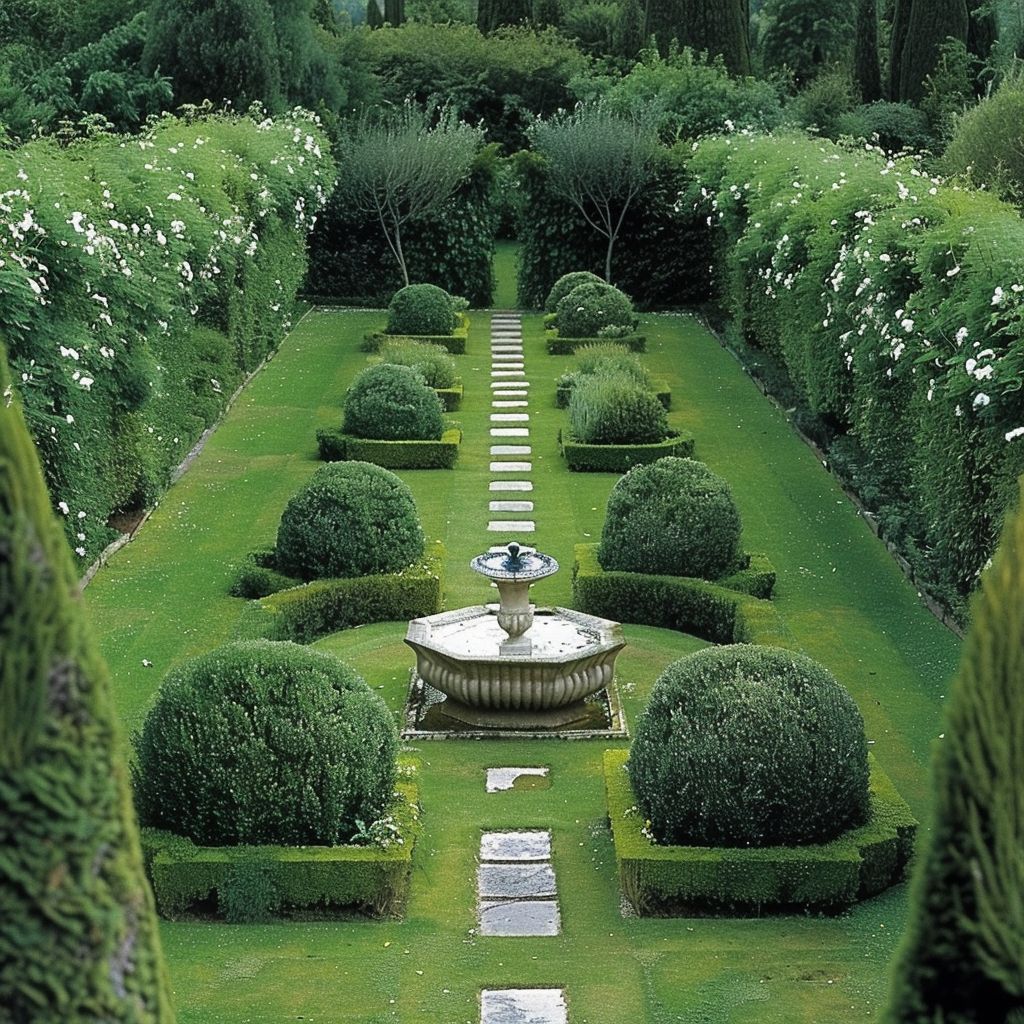
Using Edging Materials to Define Spaces
Select materials that neatly delineate garden areas. Brick, stone, or metal edging can separate lawns from pathways or flowerbeds. These lines keep everything in its place, enhancing both function and appearance.
Low hedges can also serve this purpose, providing green boundaries that add a soft yet structured feel. Consider local materials to match the character of nearby architecture, creating a cohesive look.
Enhancing With Topiary and Evergreens
Topiary art and evergreens can add both structure and beauty to your formal garden. Here’s how to make the most of these elements.
Basics of Topiary Art
Start with selecting the right plants. Boxwood, yew, and privet are common choices for creating topiary due to their dense foliage and willingness to be shaped.
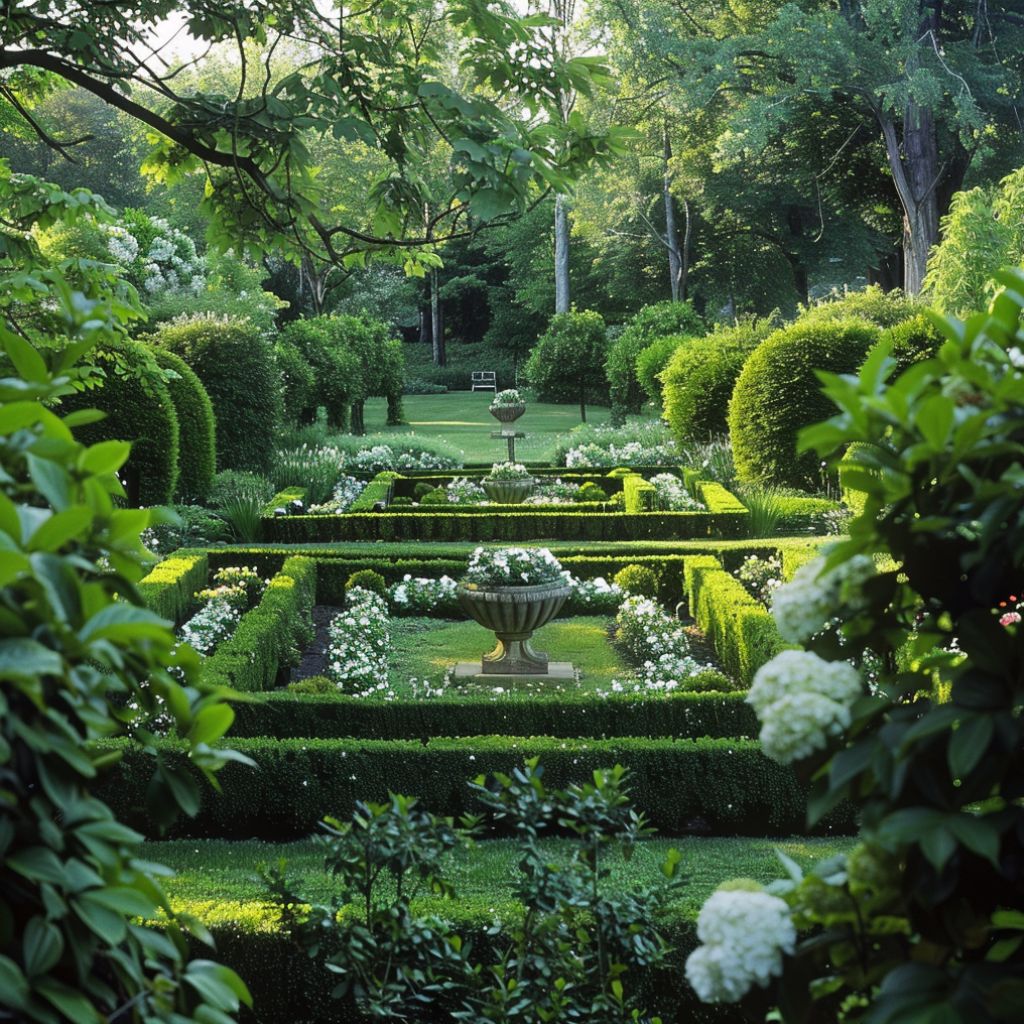
You’ll need sharp shears and some patience to groom the plants into desired forms. Whether it’s spirals, animals, or geometric shapes, topiary adds an intriguing focal point to your garden.
Choosing Evergreens for Year-Round Appeal
Leyland Cypress is an excellent choice for creating living walls and screens. Its rapid growth and tall, columnar shape add privacy and structure. Be cautious in smaller gardens, as they can outgrow space quickly.
Another option is Holly, which offers not only lush greenery but also vibrant red berries in winter. Use these plants to maintain a consistently beautiful garden through all seasons.
Combining Formality With Colour
Adding colour to a formal garden doesn’t mean sacrificing elegance. With careful planning, you can achieve a stylish look that pleases the eye.
Planning a Simple Colour Scheme
Stick to a limited colour palette. Whites, silvers, and pastels work wonderfully. Ensure harmony by using fewer colours. Agapanthus in white or blue can be repeated through borders or in containers. This approach keeps the elegance intact.
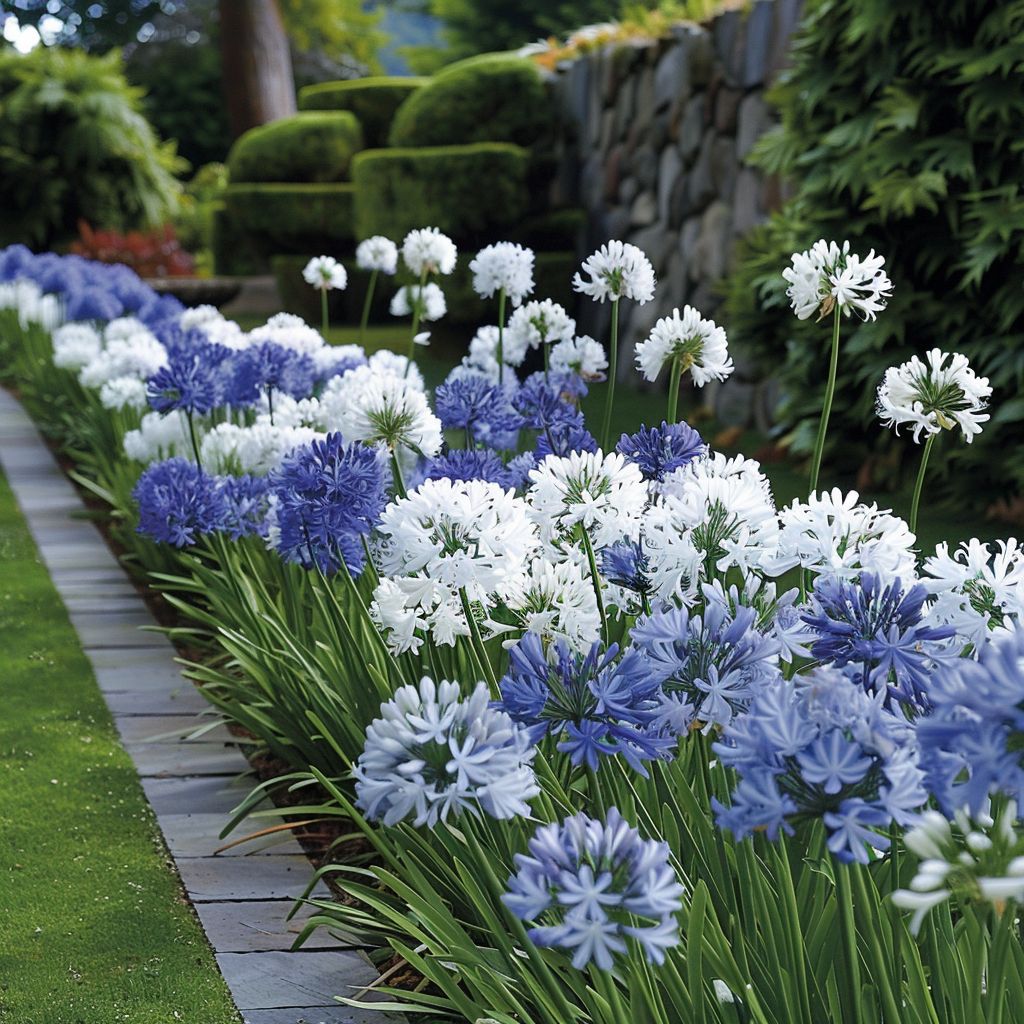
Selecting Plants for Colour Continuity
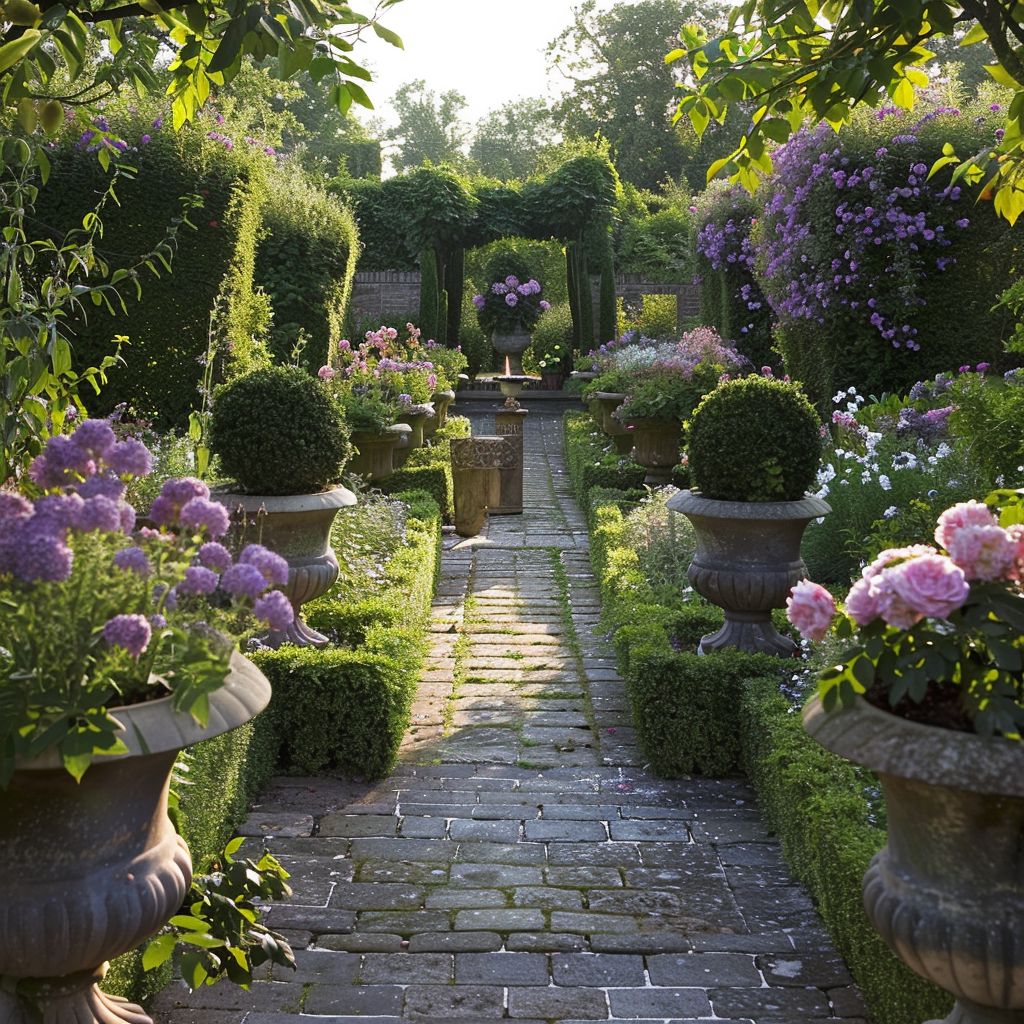
Choose plants that offer long-lasting hues. Agapanthus ‘Loch Hope’ provides deep blue flowers that fit formal settings.
Hydrangeas, especially ‘macrophylla Europa’, add vibrant purple or blue, thriving even in shaded spots. For a chic contrast, you can pair them with clipped hedges or silver-leaved plants like lamb’s ear.
Agapanthus and Hydrangeas both bring volume and enduring blossoms to your garden. They are reliable choices for maintaining colour without losing the garden’s structured appeal. Combining these can enrich your garden’s visual splendour while keeping the formal design you desire.
Up next: Gardenia Landscaping Ideas: Expert Tips for Stunning Garden Designs
